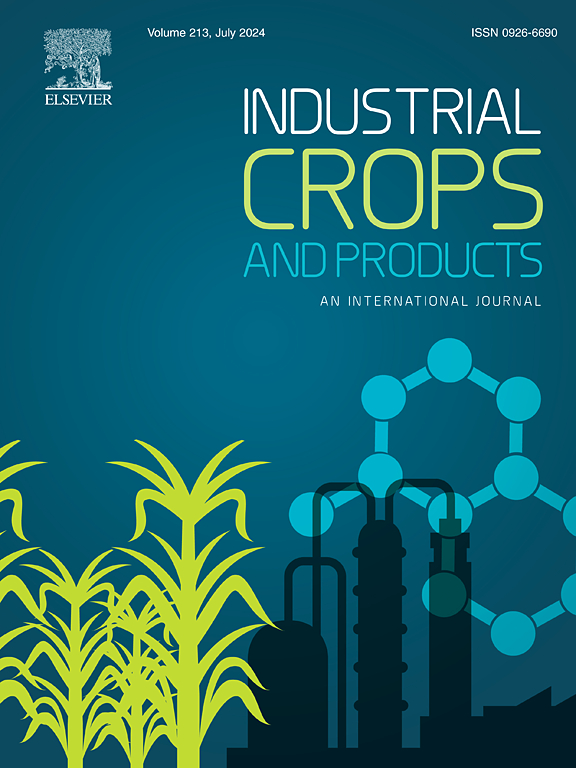Lignocellulose deconstruction and mechanistic insights into wheat straw using extrusion-ammoniation synergistic pretreatment
IF 5.6
1区 农林科学
Q1 AGRICULTURAL ENGINEERING
引用次数: 0
Abstract
This study used wheat straw as a raw material to investigate the extent and mechanism by which different extrusion-ammonification synergistic pretreatments contribute to lignocellulose deconstruction. The findings revealed that the particle size of extruded-ammoniated wheat straw samples was nearly halved compared to untreated wheat straw, the particle size of samples subjected to extrusion followed by ammoniation, as well as those treated with ammoniation followed by extrusion, was slightly larger than that of the samples undergoing simultaneous extrusion-ammoniation, likely due to the swelling effect. Microporous structures emerged on the microscopic surface, with the wheat straw samples that underwent extrusion followed by ammoniation exhibiting a greater number and higher density of micropores. The crystalline structure of cellulose was substantially disrupted, reducing crystallinity; however, crystallinity might also increase due to the influence of lignin and hemicellulose content in the amorphous regions of the wheat straw samples. The intensity of absorption peaks associated with lignin-related chemical bonds was significantly diminished, with some nearly disappearing in the samples pretreated by extrusion followed by ammoniation. The lignin content significantly decreased, while the cellulose content notably increased. Among them, the changes in the wheat straw samples subjected to extrusion followed by ammoniation were particularly pronounced, with lignin content reduced by 16.33 % and cellulose content increased by 8.94 %. Cellulase-lactobacillus synergistic solid-state fermentation significantly enhanced cellulose utilization, lactic acid production, and various sugar yields, and it is noteworthy that the yields of fermentation products from wheat straw treated with extrusion-ammoniation were 1.39–3.33 times higher than those from untreated wheat straw. The above results demonstrate that extrusion-ammoniation synergistic pretreatment effectively removes lignin, significantly deconstructs lignocellulose, markedly increases cellulose content, reduces resistance to cellulose exploitation, and substantially enhances cellulose utilization.

求助全文
约1分钟内获得全文
求助全文
来源期刊

Industrial Crops and Products
农林科学-农业工程
CiteScore
9.50
自引率
8.50%
发文量
1518
审稿时长
43 days
期刊介绍:
Industrial Crops and Products is an International Journal publishing academic and industrial research on industrial (defined as non-food/non-feed) crops and products. Papers concern both crop-oriented and bio-based materials from crops-oriented research, and should be of interest to an international audience, hypothesis driven, and where comparisons are made statistics performed.
 求助内容:
求助内容: 应助结果提醒方式:
应助结果提醒方式:


